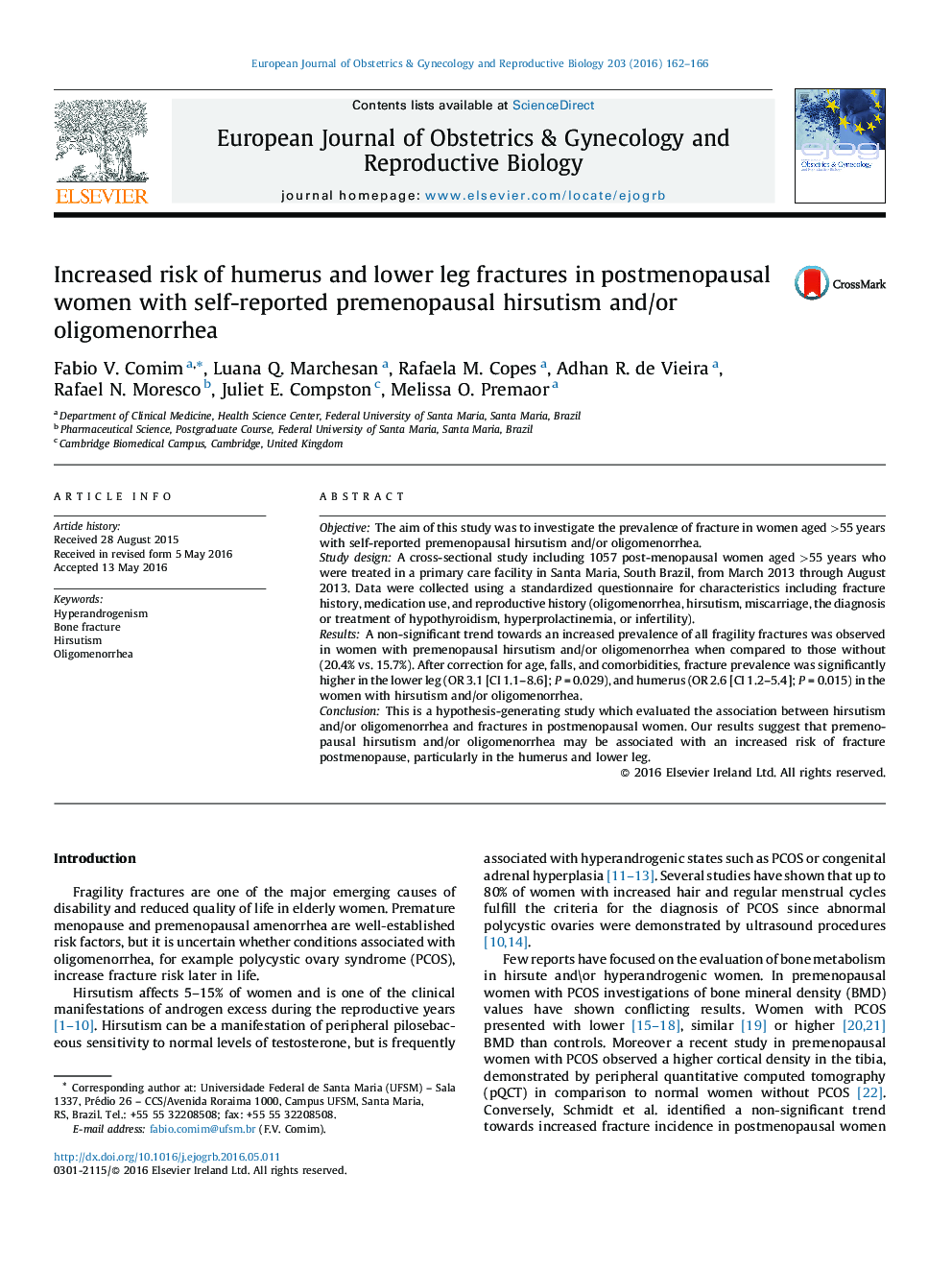| Article ID | Journal | Published Year | Pages | File Type |
|---|---|---|---|---|
| 6172667 | European Journal of Obstetrics & Gynecology and Reproductive Biology | 2016 | 5 Pages |
ObjectiveThe aim of this study was to investigate the prevalence of fracture in women aged >55 years with self-reported premenopausal hirsutism and/or oligomenorrhea.Study designA cross-sectional study including 1057 post-menopausal women aged >55 years who were treated in a primary care facility in Santa Maria, South Brazil, from March 2013 through August 2013. Data were collected using a standardized questionnaire for characteristics including fracture history, medication use, and reproductive history (oligomenorrhea, hirsutism, miscarriage, the diagnosis or treatment of hypothyroidism, hyperprolactinemia, or infertility).ResultsA non-significant trend towards an increased prevalence of all fragility fractures was observed in women with premenopausal hirsutism and/or oligomenorrhea when compared to those without (20.4% vs. 15.7%). After correction for age, falls, and comorbidities, fracture prevalence was significantly higher in the lower leg (OR 3.1 [CI 1.1-8.6]; PÂ =Â 0.029), and humerus (OR 2.6 [CI 1.2-5.4]; PÂ =Â 0.015) in the women with hirsutism and/or oligomenorrhea.ConclusionThis is a hypothesis-generating study which evaluated the association between hirsutism and/or oligomenorrhea and fractures in postmenopausal women. Our results suggest that premenopausal hirsutism and/or oligomenorrhea may be associated with an increased risk of fracture postmenopause, particularly in the humerus and lower leg.
